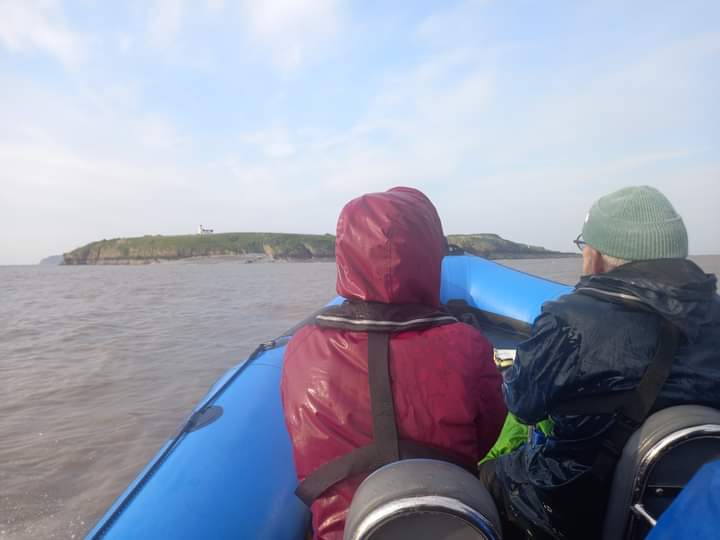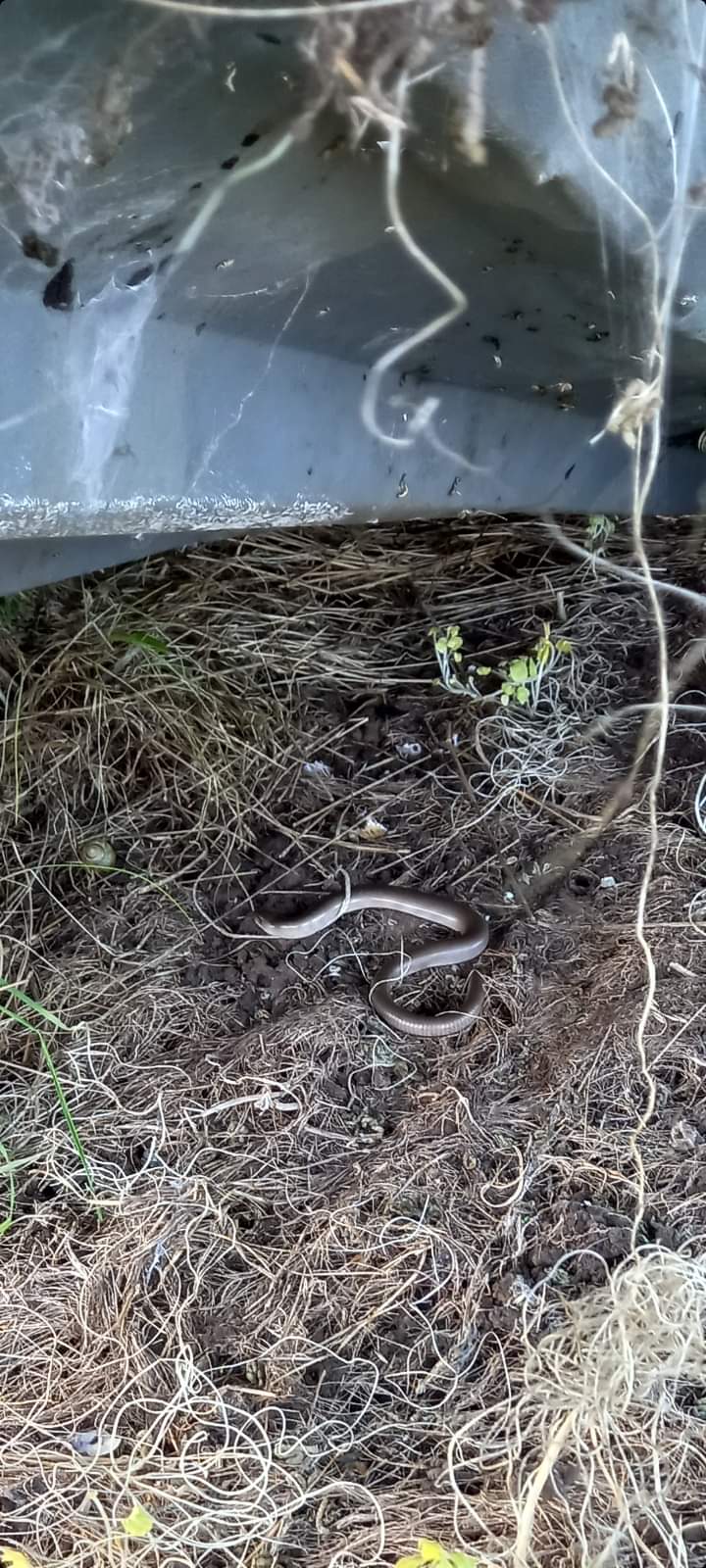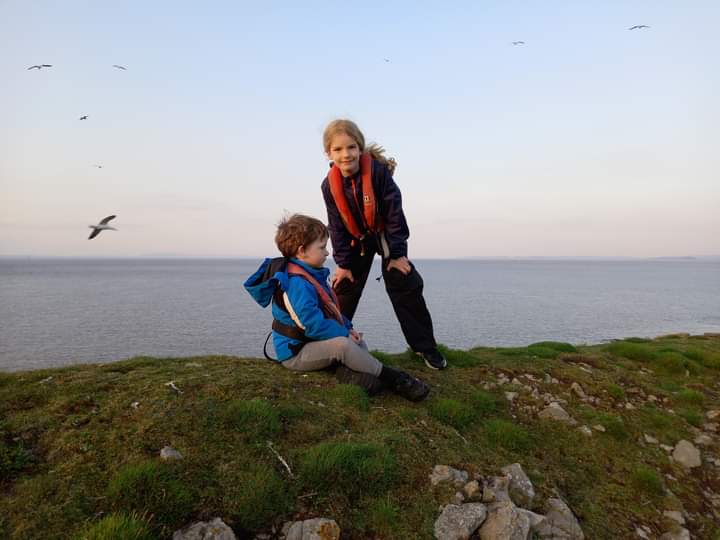by Mark Taubert, Palliative Care Consultant, Cardiff University, Wales, United Kingdom Twitter: @ProfMarkTaubert
A trip to a remote island with a derelict cholera hospital, to record a National Heritage Lottery funded audio podcast about pandemics, palliative care and isolation, inadvertently turns into an adventure.

Flat Holm, or ‘Ynys Echni’, its Welsh name, is one of two small islands in the United Kingdom’s Bristol Channel and makes for Wales’ most southerly point. I have lived in Wales for 18 years, but this is my first time visiting this remote place, a few kilometres off the Welsh mainland, in eyeshot of one of the mainland hospitals I work in, and also the Penarth Marie Curie hospice. I was always told not bother, or to avoid it, as it is a wild and inhospitable place. Some of my patients in the past have told me stories about the island, with some even being regular visitors.
It is uninhabited apart from occasional wardens, whose work here includes habitat management, tasks such as biological monitoring of some of the rare wildlife on the island. We arrive, slightly wetter than when we set off, due to a choppy crossing in a rigid inflatable boat, just after 7am. Lesser black-backed gulls circle above us, menacingly, before the boat has even landed, and their warning cries add to the noise from the crashing waves. There is a large colony of gulls on the island, and visitors are most definitely not welcome, especially during nesting season.

We land and step ashore: with me are a fellow medic, my two children (it is half-term, they are aged 9 and 4, and I could not get childcare for the day. Also, they were insistent on joining) and a group of artists. The crossing is quite choppy, and we get completely drenched in seawater when we hit a few high waves.

We have come here to do some sound recordings adjacent to the old Victorian isolation hospital at the centre of the island, which used to house patients with cholera. We reflect on pandemic isolation, ‘island-style’ in the nineteenth century, and how it has compared to recent experiences with Covid-19. My colleague, Dr Andrew Freedman, talks about infectious diseases, and I recount experiences with patients during the worst of the pandemic. The children contribute their views on the notion of an isolation hospital on a difficult-to-access-island. We compare and contrast, pandemics now and then. Once the recordings are finished, we learn that our return boat has had a defect, and we will not be able to get off the island. The children cheer. Stranded! HM Coastguard are notified. Not only have I gone somewhere I was advised best not to go, I have also got marooned in the place! Great. It is a sunny, if windy, day, and we have provisions, so no need for a rescue. But how long will we be here? After hanging out some of our seawater drenched clothes to dry, we set off to explore the island.

Almost circular, it is a limestone island, approximately 620 meters in diameter. It is a site of special scientific interest, and rises in a gentle slope from the exposed western rocky shore, to more sheltered easterly cliffs, at the top of which stands a prominent lighthouse. The old cholera hospital is derelict, its roof missing. My daughter draws a sketch of it, a truly haunting place that you would not want to walk around at night. Wild peonies and thistles are growing everywhere, and it is one of the few British sites where you find Wild Leeks, growing up to 6 foot tall, topped with a large purple flower that looks like a pom-pom. My children ask one of the island wardens, Heidi, what type of animals we can find here. A list is soon made, and includes herring gulls, shelduck, rabbits, and slow worms.

After a few hours of watching rabbits, seagulls and butterflies, my children decide that a slow worm must now be located. Heidi offers a few tips; between the old farm house and the island’s fog horn station, we must seek out an old, rusty metal sheet in a field. I have very little hope that we will succeed, but my daughter proves me wrong; on finding the metal sheet, a very large slow worm emerges from its disturbed slumber! The sun starts to disappear, dusk is upon us, and then we hear that a return boat is arriving to pick us up. The gulls sing their good-byes. It has been a wonderful day of discovery. A place that many of my patients in University Hospital Llandough, and the hospice in Penarth can see from the windows of their inpatient beds, has become less of a mystery.
The audio podcast on our reflections on cholera, Covid-19, palliative care and island-isolation can be found here:
https://art.flatholmisland.com/podcast-2-the-cholera-hospital-flat-holm/
and here:
https://audiomack.com/artstation/song/podcast-2-the-cholera-hospital-flat-holm
Part of this national lottery funded project will involve a film about Flat Holm by Glenn Davidson and his Artstation team, which will include spoken words by patients like Vicky, who was recorded during a ward round at Velindre Cancer Centre in Cardiff. These films will be screened in 2023. You can hear the binaural audio recordings of this ward round here
While we were on the island, we were co-stranded with BBC journalist Mair Bosworth, who recorded this ‘Untold‘ radio programme for BBC Radio 4. https://www.bbc.co.uk/sounds/play/m0017cny
A write-up in the Guardian newspaper based on this trip and promoting remote European locations can be found here.

